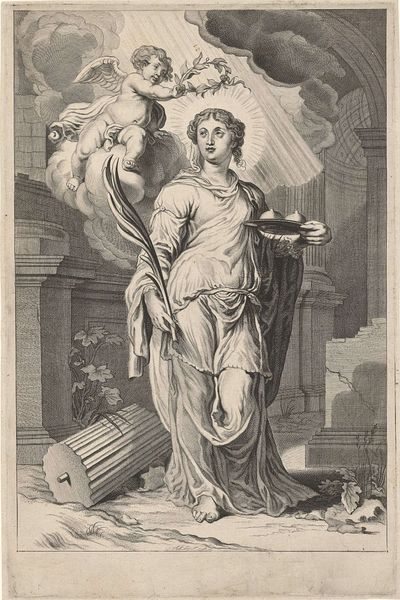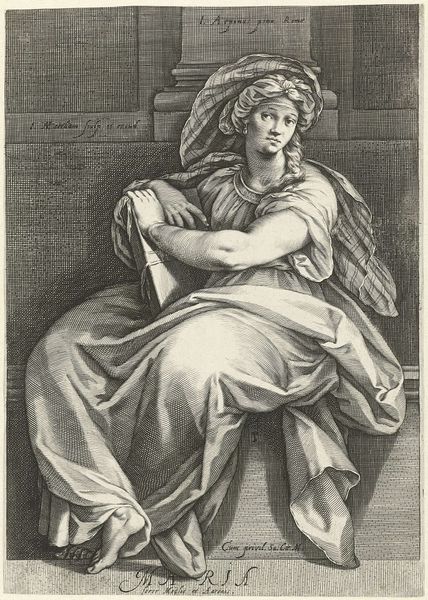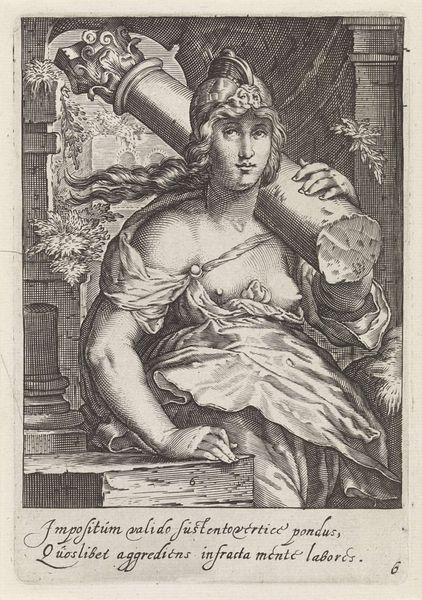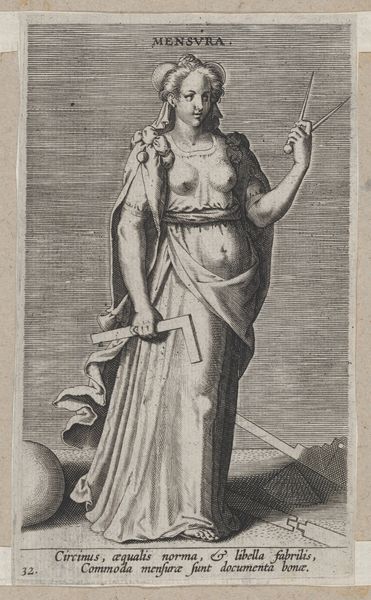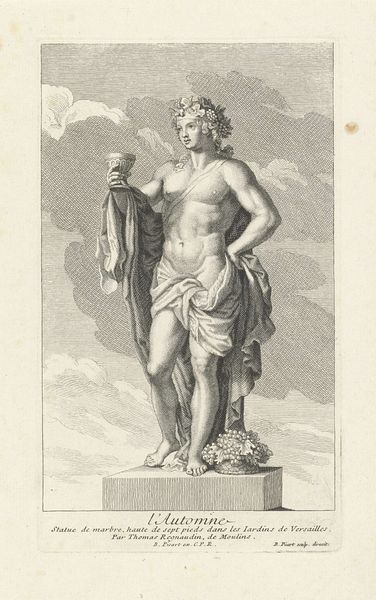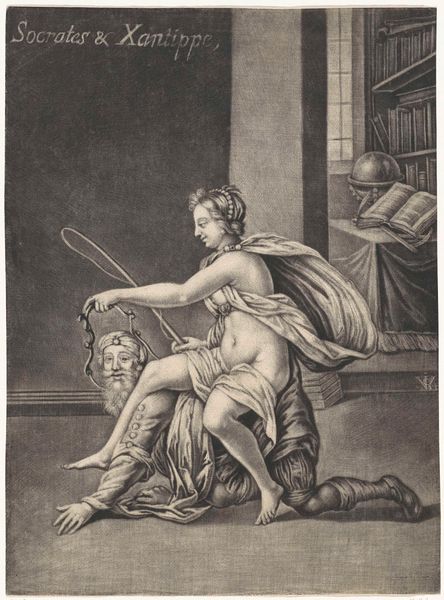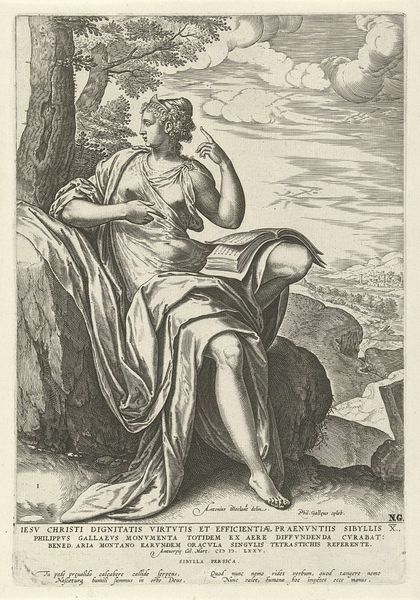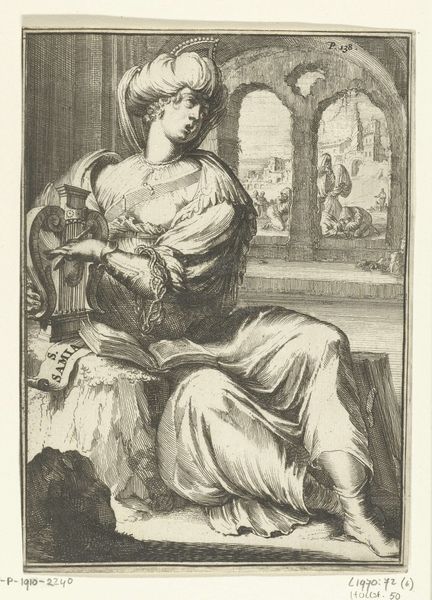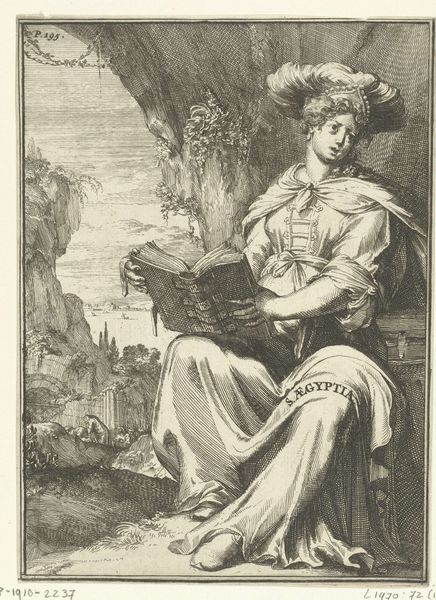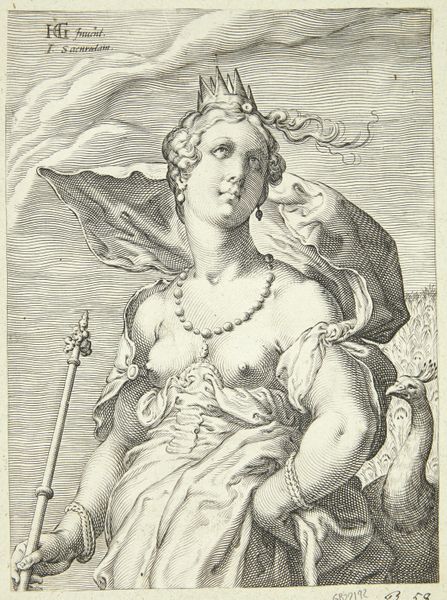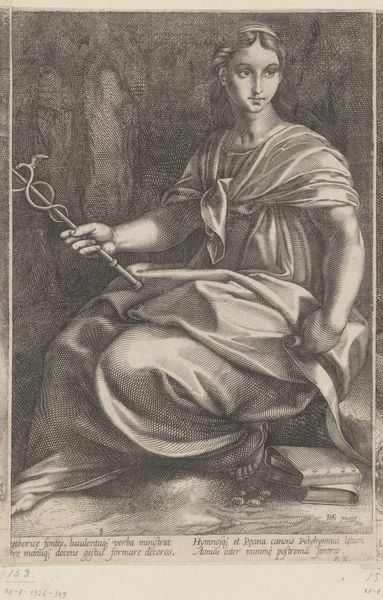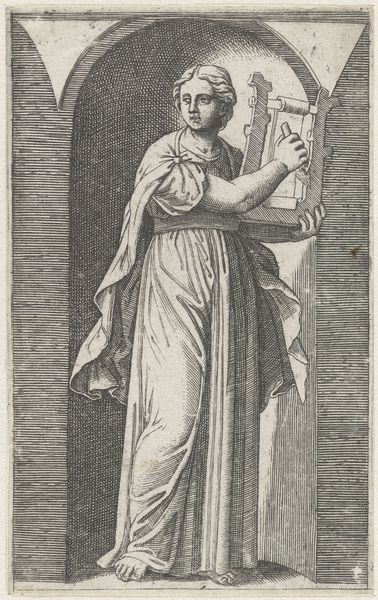
engraving
#
portrait
#
allegory
#
baroque
#
portrait drawing
#
history-painting
#
engraving
Dimensions: height 251 mm, width 191 mm
Copyright: Rijks Museum: Open Domain
Editor: Here we have "Voorzichtigheid (Prudentia)", or "Prudence," an engraving from sometime between 1619 and 1675 by Lucas Vorsterman I, housed at the Rijksmuseum. I’m struck by the figure's contemplative pose, almost burdened, yet surrounded by symbols of power and knowledge. How do you interpret this work, especially in relation to the allegory of prudence? Curator: That's a keen observation. This engraving operates within a complex web of symbolism reflecting 17th-century understandings of virtue, governance, and gender. Prudence, often depicted as a female figure in this era, wasn't simply about cautiousness. Instead, what sociopolitical function does a female representation of 'carefulness' have, particularly within a European society defined by empire-building and nascent capitalism? Editor: I see. So, the choice to represent prudence as female might say more about the societal expectations of women during this period? Curator: Precisely. Look closer. Prudence is adorned with symbols – the serpent representing wisdom, the mirror symbolizing self-knowledge, and the two-faced head of Janus signifying foresight and hindsight. These aren’t just aesthetic choices, they were tools for communicating specific ideas about ideal rulership and moral responsibility. Vorsterman reproduces this traditional allegorical framing; my question is whether his choices around Prudence's figure can be analyzed as reinscribing or resisting patriarchal norms. Is she pensive or paralyzed? Is she embodying legitimate intellect, or the burden of a circumscribed world? Editor: So, by looking at the historical and social context, we can read beyond the surface level and understand the potential power dynamics at play. Thank you! Curator: Exactly! Art is never created in a vacuum. Understanding the historical currents helps us to unlock deeper meanings and to engage with the artwork as a form of social commentary, whether intentional or not.
Comments
No comments
Be the first to comment and join the conversation on the ultimate creative platform.
